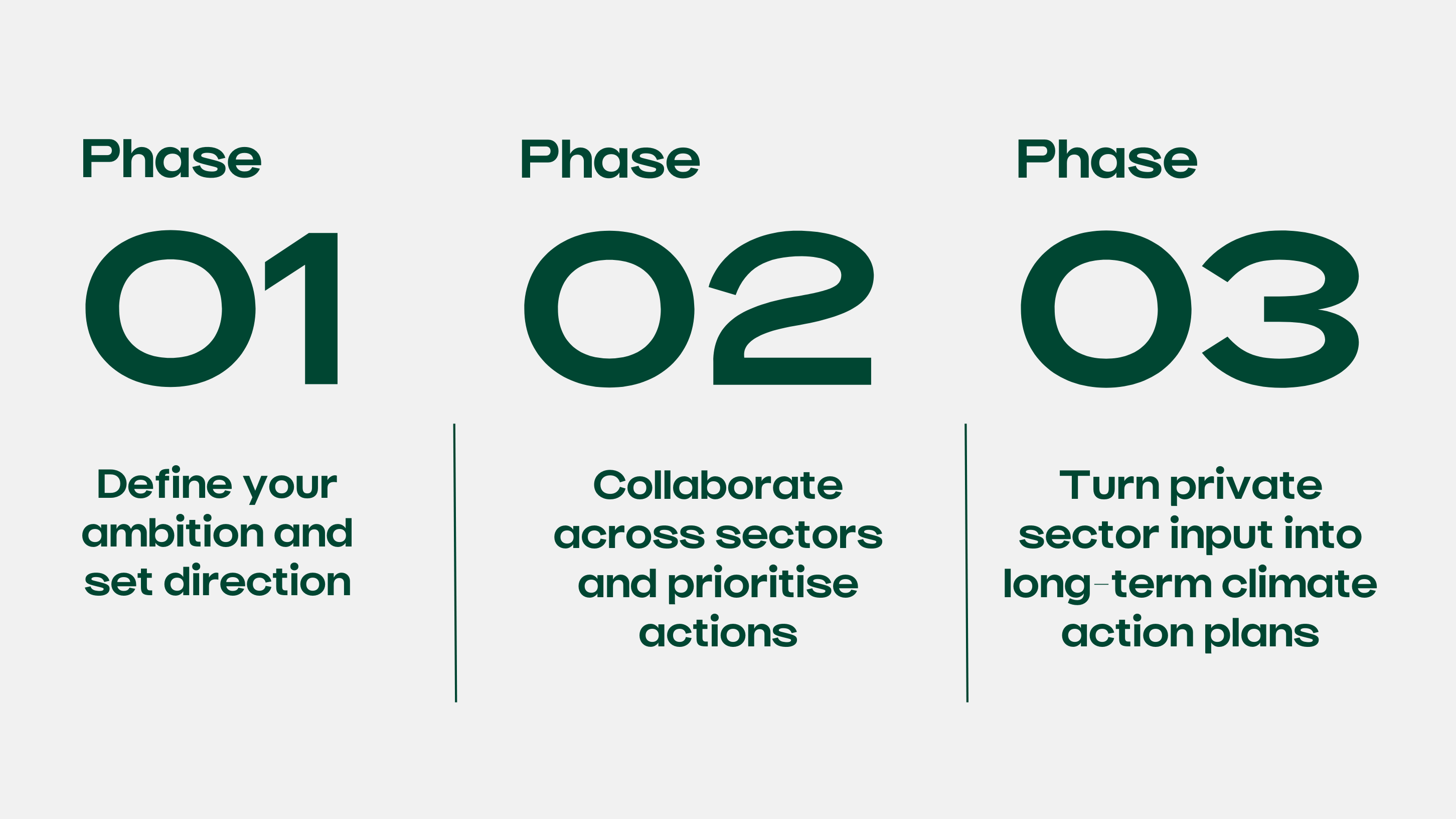Playbook: How to engage the private sector in climate action plans
Learnings from the Danish climate partnerships on the road to 70% greenhouse gas emissions reduction.
Download Playbook
Learnings from the Danish climate partnerships on the road to 70% greenhouse gas emissions reduction.
Download Playbook
In December 2019, the Danish parliament set a binding target of reducing the country’s CO2e emissions by 70% by 2030 (compared to 1990 levels) without knowing how to fully reach this goal. The relatively short time frame – combined with the high level of ambition – created a sense of urgency to act.

Learnings from the Danish climate partnerships on the road to 70% greenhouse gas emissions reduction.
In the example of the Danish Climate Partnerships, the trade associations played a significant role, functioning as secretariats for all the climate partnerships. They also provided advice to the government in the process of appointing chairpersons.

When developing the recommendations, it is key to collaborate across the entire ecosystem and include as many relevant voices as possible. Note that not all stakeholders will have equal influence or interest in the partnership. For that reason, it is important to separate the identified stakeholders into groups, so that an approach to set and manage their expectations can be developed.
The GHG Protocol establishes comprehensive global standardised frameworks to measure and manage greenhouse gas (GHG) emissions from private and public sector operations, value chains and mitigation actions.
The Danish Climate Partnership for Energy and Utilities exceeded the government’s ambitions and identified reductions of 95 percent . This was achieved by working across the energy sector, co-creating, and focusing on innovative technologies.